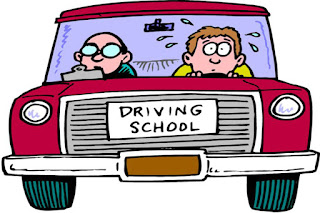Why some books are Tomes!
Have you ever come across one of those books, usually non-fiction, that is stuffed with periphery information called front matter that seems to serve no other purpose than to make the book bigger and more important than it really is? Well, if you have, read along and see if this doesn’t sound familiar.
First there is the usual stuff about copyright, publisher, previous editions, etc. Then we come to the table of contents that not only lists the chapter titles but every subsection within each chapter, every one with an explanation of the subject matter covered. That can take pages in itself.
Next comes the introduction, which more often than not is written by some so-called expert on the author and his times, which itself can go on for pages and pages -- one big info dump. And gosh these experts really want you to know how expert they are, because they cover every nook and cranny in the author's life attributing to each one a significance it cannot possibly bear under scrutiny. Usually the introduction is where I lose interest because this expert, the guy on the undercard who is supposed to get me excited and motivated about what I am about to read, has killed all desire to do so. I once read an introduction that covered all the things an introduction of this type is supposed to cover. He told us about the author, his friends and family, and how the times in which he lived shaped the author's views. Fine. I get that. But then he went on. He started summarizing the book chapter by chapter. My goodness, but they can go on.
But we are not done. No. No. No. Once we skip (or tire of) the introduction, we page through to a preface to an edition, and a preface to an edition, and a preface to an edition, ad infinitum. Now these prefaces are truly worthy of our reading time. One must know the changes made from one edition to another, when more than likely they were undone, or at least changed, in another, future edition, mustn't one?
Next we come across the chronology of the author’s life. The chronology is my favorite front matter. It is here we learn such things as when the author was born, when his parents divorced, when he submitted his first story to Kids Highlights, when he suffered a bout of farts that lasted through his 15th year -- that last one was for humor's sake, and yet somehow I think it only a slight exaggeration. -- when each of his 20 children were born, and when each of 15 of them died. (This book was written when such deaths were common.)
Next we come across the chronology of the author’s life. The chronology is my favorite front matter. It is here we learn such things as when the author was born, when his parents divorced, when he submitted his first story to Kids Highlights, when he suffered a bout of farts that lasted through his 15th year -- that last one was for humor's sake, and yet somehow I think it only a slight exaggeration. -- when each of his 20 children were born, and when each of 15 of them died. (This book was written when such deaths were common.)
Once we have negotiated the chronology, we are almost there, but not quite yet. There is still the matter of the Author's Note. The Author's Note can be brief, sometimes. Other times not. Written by the author himself, obviously, it can go on and on when written by someone whose windbagginess rivals the windbagginess of the author of the introduction. But at least when done with the Author's Note we have crossed the Rubicon and are at the beginning's edge, so things are looking up.
There is one upside to all this. When I finally start reading the book, I’m already more than a quarter of the way through it, so I am filled with a sense of accomplishment I have not earned. We can all use an ego booster.
Anyone have this experience?
Tally on.


This comment has been removed by the author.
ReplyDelete